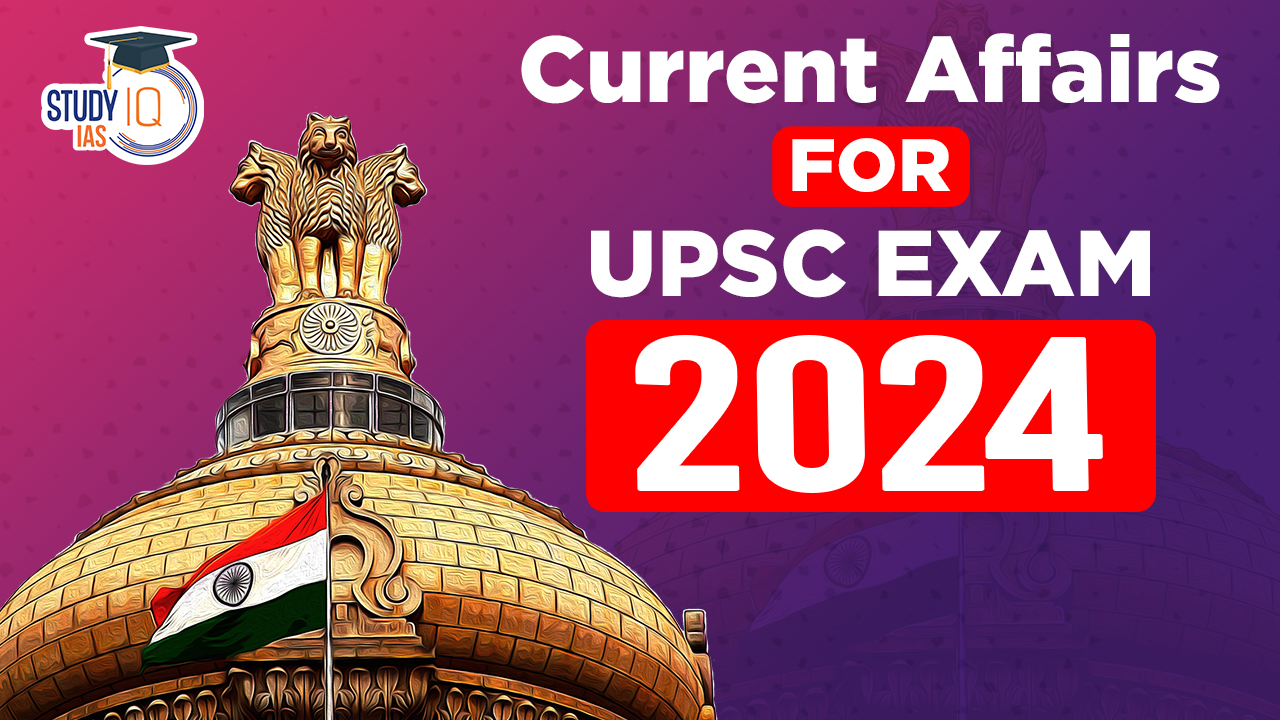Table of Contents
Calling Attention Motion
Context: Union Home Minister replied to a Calling Attention Motion raised on the matter of Wayanad Landslide
About Calling Attention Motion
- It is introduced in the Parliament by a member to call the attention of a minister to a matter of urgent public importance, and to seek an authoritative statement from him on that matter.
- It can be moved in Rajya Sabha as well as Lok Sabha.
- It gives members an opportunity to bring to the surface the failure or inadequate action of Government on a matter of urgent public importance.
- This procedural device is analogous to an adjournment motion without its censure aspect.
- Like Zero Hour, it is also an Indian innovation in the parliamentary procedure.
- However, unlike Zero Hour, it is mentioned in the Rules of Procedure.
- The concept of Calling Attention Motion was introduced in
- It’s essential to note that only one issue can be raised during the motion. If multiple matters are raised, the speaker decides which one is most important and should be taken up first.
Colour Coded Rainfall Warning by IMD
Context: Early Warning system related to Rainfall in India
About Indian Meteorological Department (IMD)
- It is the National Meteorological Service of the country and the principal government agency in all matters relating to meteorology and allied subjects.
- It was established in 1875 and Headquartered in New Delhi.
- There are 6 Regional Meteorological Centres – Mumbai, Chennai, New Delhi, Calcutta, Nagpur and Guwahati.
- It is an agency of the Ministry of Earth Sciences of the Government of India.
- IMD Mandate:
- To take meteorological observations and to provide current and forecast meteorological information for weather-sensitive activities like agriculture, shipping, aviation, offshore oil explorations, etc.
- To warn against severe weather phenomena like tropical cyclones, norwesters, dust storms, heavy rains and snow, cold and heat waves,,
- To provide meteorological statistics required for agriculture, water resource management, industries, oil exploration and other nation-building activities.
- To conduct and promote research in meteorology and allied disciplines.
About Colour Coded warnings issued by IMD
- Four colour codes are used to for warning – Green, Yellow, Orange, and Red
- The assessment is based on the likelihood of an event occurring and for an impact-based warning valid for a maximum of five days.
- These alerts are primarily for the people who live in the affected areas and how they should react in that specific situation.
Meaning of Colour codes
- Green – No advisory
- A green alert indicates that, while a weather event is possible, no advisory is required.
- Green code denotes less than 64 mm of rain in 24 hours
- Yellow – Be aware
- A yellow alert denotes bad weather conditions and the possibility that the conditions will worsen, causing disruptions to daily life.
- A yellow alert is issued if the expected rainfall ranges between 64.5 mm and 115. 5 mm.
- Orange – Prepare
- When extremely bad weather is forecast, an orange alert is issued to warn of potential disruptions to transport, rail, road, and air. Power outages are also likely.
- An orange alert is issued when rainfall totals between 115.6 and 204.4 mm in a single day
- Red- Take action
- A red alert is issued when an extremely bad weather condition is expected to disrupt transportation and power supply. It might also pose a risk to life.
- a red alert is issued when rainfall totals exceed 204.5 mm in a 24-hour period.
| Facts |
|
BCCI, SAI told to curb surrogate advertising for tobacco, alcohol
Context
- The Health Ministry has issued directives to the Sports Authority of India (SAI) and the Board of Control for Cricket in India (BCCI) to prevent surrogate advertising of tobacco and alcohol-related products by sportspersons.
- The communication highlights the ethical responsibility of public figures, especially sportspersons, in promoting public health and upholding societal values.
Ethical Concerns
- Role Models and Public Influence:
- Sportspersons and celebrities are influential role models, particularly for young people.
- Their endorsement of tobacco and alcohol, even indirectly, can lead to increased consumption among the youth, counteracting public health efforts.
- Integrity and Responsibility:
- Sportspersons and celebrities have a duty to promote healthy lifestyles and act with integrity.
- Their involvement in surrogate advertising undermines their role as advocates of health and fitness.
Ministry’s Recommendations
- Anti-Tobacco Declaration: Sportspersons should sign an anti-tobacco declaration of interest form, committing to not endorse tobacco products.
- Restrictions in Events: Prohibit the promotion and advertising of tobacco and alcohol products in stadiums or events hosted or partnered by the BCCI.
- Issue directives to sportspersons under BCCI’s ambit to refrain from surrogate promotion, partnership, or advertisement of tobacco and related products.
- Extending to Other Celebrities: Prevent surrogate advertisements by other celebrities in sporting events like the IPL.
Ethical Implications and Impact
- Public Health and Youth Protection:
- These measures aim to reduce the consumption of tobacco and alcohol, particularly among youth.
- Reinforces the positive image of sportspersons as health advocates.
- Standards of Integrity in Sports:
- Upholds the highest standards of integrity and responsibility in sports.
- Ensures sportspersons are seen as champions of ethical behaviour and public welfare.
- Wider Societal Impact:
- By curbing surrogate advertising, the Ministry seeks to foster a culture of health and wellness.
- Strengthens the ethical foundation of public figures’ roles in society.


 Accessibility Rules Based on Principles
Accessibility Rules Based on Principles
 Canopy Bridges for Gibbons and Hoollonga...
Canopy Bridges for Gibbons and Hoollonga...
 Supreme Court Rejects Review of Same-sex...
Supreme Court Rejects Review of Same-sex...




















